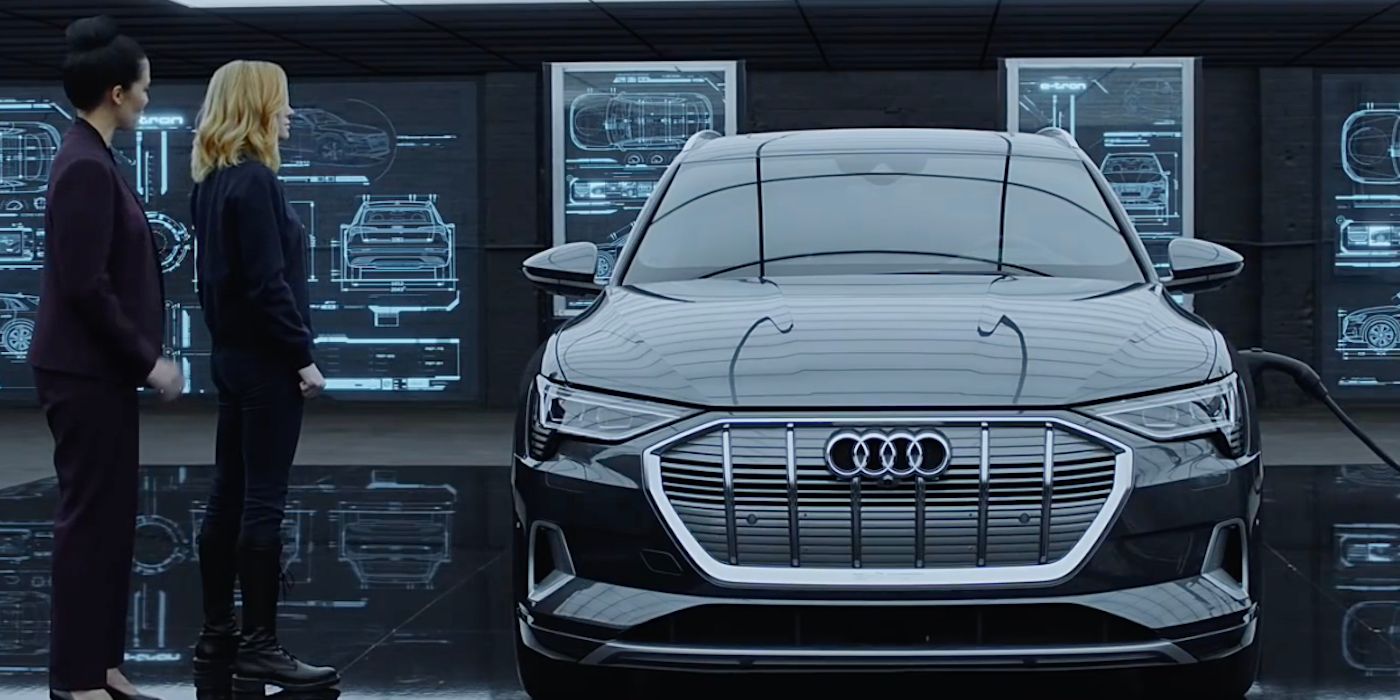WARNING: The following contains spoilers for Avengers: Endgame, in theaters now.
Marvel's Avengers: Endgame contains a lot of product placement. There's no real problem with the storied practice in and of itself, as partnering with brands can be effective and lucrative for both parties. However, Endgame's product placement refuses to imagine the future in which the film is set.
Infinity War takes place in either 2017 or 2018, with the official Marvel Cinematic Universe timeline indicating the former, but dialogue from the film suggesting the latter. Endgame's five-year time jump then puts the sequel in either 2022 or 2023. Now, it's completely reasonable to assume the snap, which eliminated half of all life in the universe, would shut down industry for a time. However, there's a sense Earth has stabilized, due in large part to the work of the remaining Avengers.
There are two product placements in particular worth spotlighting: Audi cars and Pixel phones. When Tony Stark drives up to the New Avengers Facility, the movie makes a point of showing his Audi E-tron GT, a concept car that debuted in November 2018.
It's possible the Marvel Cinematic Universe's Audi gave Tony one of its concept cars before the snap. Infinity War might have also taken place in November or December 2018, as there's some indication during its New York City scenes that it's later in the year. That's not impossible, especially in a universe in which a man in bleeding-edge armor fights a purple alien. However, it would mean Tony's car is at least five years old in Endgame, which seems odd for the billionaire playboy.
The problem is compounded by the Google Pixel phones placement. They appear twice, and there's some debate as to whether they're an older model or a sneak peek at the Pixel 3a. Regardless of their model, two characters are using tech from either 2018 or 2019. If they're actually meant to be new phones from five years in the future, well, one need only compare the iPhone 5S, which released in 2013, to either the iPhone XS or XR, which released in 2018, to see how much the look of tech can change in five years.
Maybe these two products were delayed due to the snap, and are actually new in the context of the movie. That's totally possible, although the movie doesn't provide any indication. However, there's no sign industry stopped for five years. The Pixel phones are capable of receiving calls; Thor, Korg and Miek play Fortnite online on a PlayStation 4, which would be 10-year9old hardware following the time jump. That indicates telecommunication structures are still standing, so it follows other industries are also functioning. We also see people working at restaurants and storage lockers.
Capitalism is still clearly alive and well, so there certainly would be competition to become the first to put out a new phone or car. There aren't many people still using the same phone they did in 2013. Plus, technology would almost certainly change to fit the loss of so many people. A society missing half its population is one fundamentally different than the one in which we live, both in terms of how it creates and consumes.
Maybe the point of Endgame is that people have given up following the snap and are stuck in the past. However, all of those aforementioned industries still functioning would seem to contradict the notion that people aren't working. Plus, Steve Rogers makes it clear some people have moved on. That means technology should also be advancing in kind. Just because the movie's focal points aren't using new consumer goods doesn't mean they don't exist, and it would make sense to see at least some new objects crop up.
RELATED: How Endgame Sets Up the Falcon & Winter Soldier TV Series
There's a pretty clear reason why Endgame made the choice not to imagine future technologies. Upcoming films in the MCU -- like Spider-Man: Far From Home -- will presumably take place after that five-year time jump. By keeping technology in the present, Endgame makes certain those films don't have to deal with the logical advancement of technology and can keep using our current technology as the next product to sell. Endgame's product placement probably wouldn't be so distracting if it chose not to linger on these objects the way it does, but because it does so it solicits questions about Earth after the Decimation that it can't, and doesn't, answer.
Directed by Joe and Anthony Russo, Avengers: Endgame stars Robert Downey Jr. as Iron Man, Chris Evans as Captain America, Mark Ruffalo as Bruce Banner, Chris Hemsworth as Thor, Scarlett Johansson as Black Widow, Jeremy Renner as Hawkeye, Brie Larson as Captain Marvel, Paul Rudd as Ant-Man, Don Cheadle as War Machine, Karen Gillan as Nebula, Danai Gurira as Okoye and Bradley Cooper as Rocket, with Gwyneth Paltrow Pepper Potts, Jon Favreau as Happy Hogan, Benedict Wong as Wong, Tessa Thompson as Valkyrie and Josh Brolin as Thanos.

